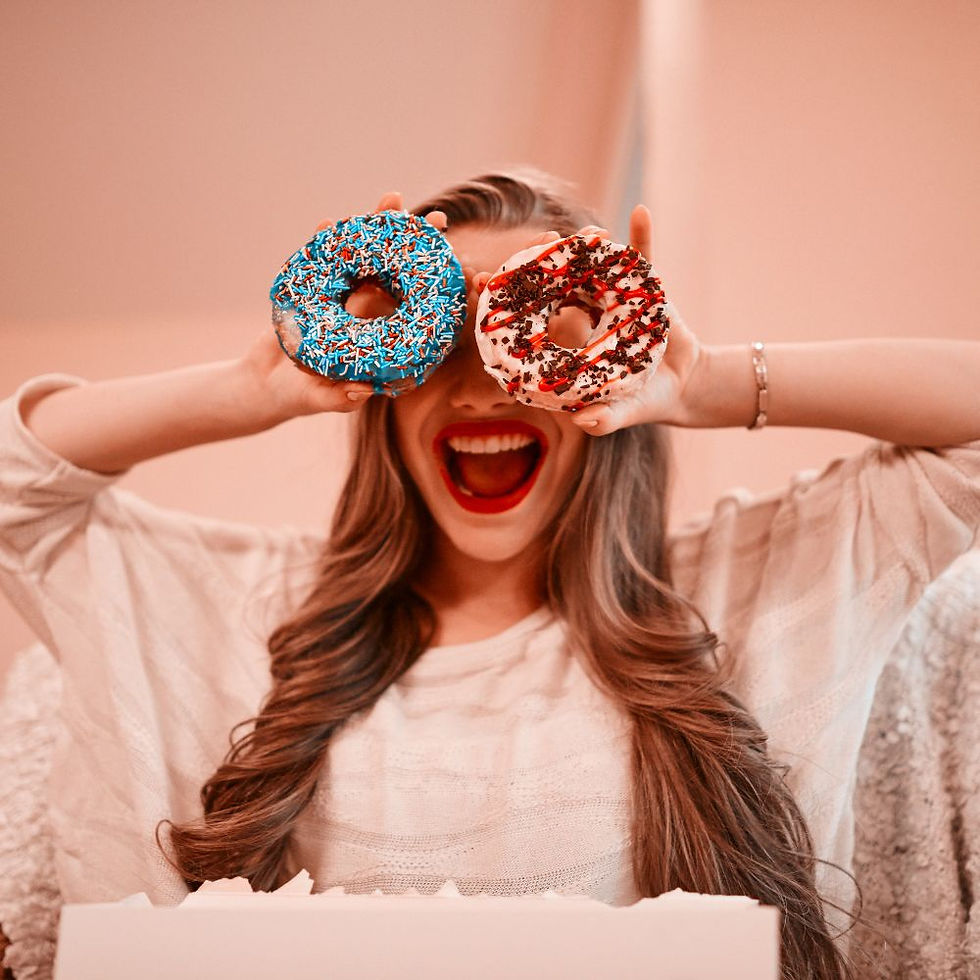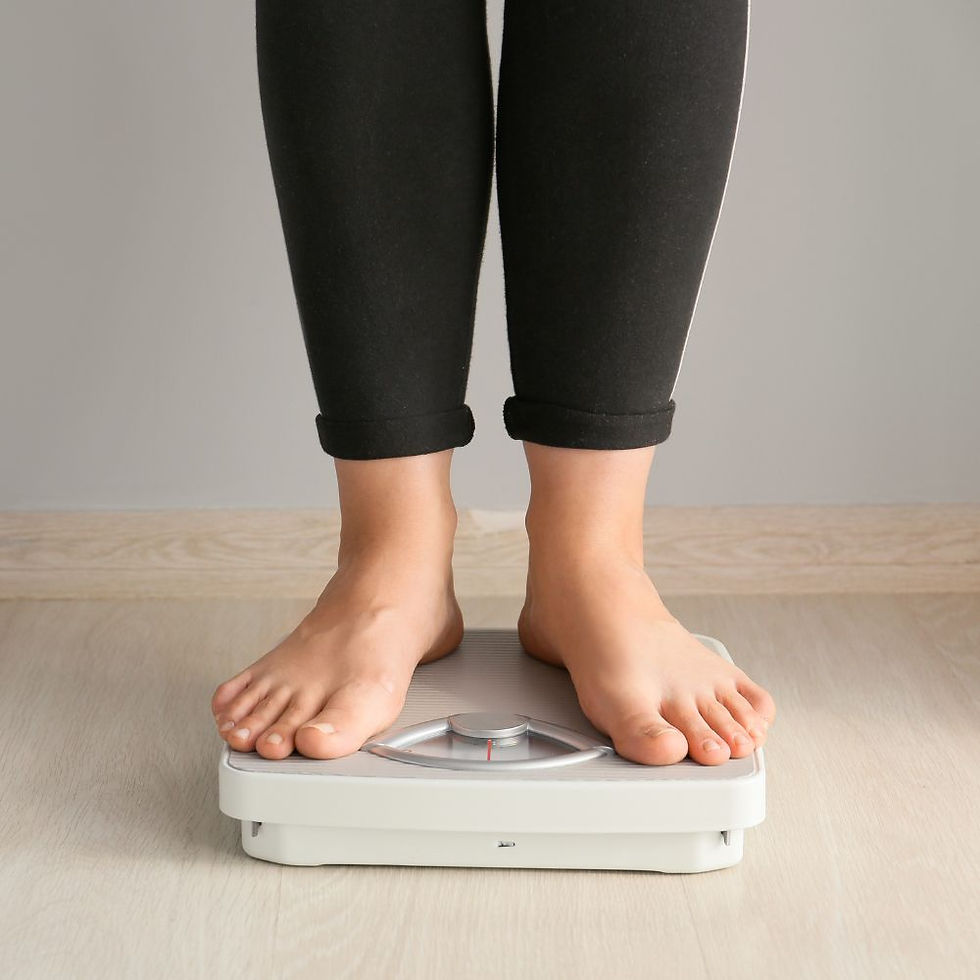.jpg)
It’s not a magic fix. But it is a fair fight
GLP-1s don’t do the work for you. You still have to show up, make choices, and learn new habits. But for the first time, it feels like you’re not starting ten steps behind.
Because here’s the truth no one tells you: for some people, food choices have always been simple. They eat when they’re hungry, stop when they’re full, and don’t think about it much in between. They were born with the food noise volume dial set low, and the stop eating switch was already ready to fire.
But if you’ve struggled with weight or overeating for years, that wasn’t your reality. You were probably constantly negotiating with cravings that didn’t make sense. Fighting urges you couldn’t explain. Watching others walk away from something delicious like it was nothing, while you sat there wondering why you couldn’t.
It wasn’t laziness or a lack of willpower. It was your biology. Loud, relentless, and in control.
GLP-1s help level that playing field. They take some of the food noise out of the equation so you can finally hear your body clearly. You’re not battling every bite. You’re not spending your whole day trying to resist, distract, or delay.
For the first time, you can just… eat. Or not. Without the chaos.
Using GLP-1s is not cheating. and it’s not a shortcut. It is what it feels like to finally have the same control that others were given from the start.
That’s what makes this a fair fight. And for many people, that changes everything.
It’s not just about food
Food noise isn’t really about food. It’s about mental load. It’s about how much brain space has been taken up by eating, not eating, planning to eat, and feeling bad for eating.
When that noise quietens, people notice other changes too. More energy, more calm, more clarity and more room for just living.
So if you are thinking about starting, or have just started on a GLP-1, and you’re wondering whether it’s working, don’t just look at the scales. Ask yourself: "Is it a little quieter in here?", because that silence? That’s the sound of something finally changing.
Think of it like this: hunger is your body’s notification system, a gentle, necessary ping when fuel is running low.
Food noise is dozens of apps running in the background, all firing off alerts at once. “You’re bored.” “That looks tasty.” “You’ve had a bad day.” “She’s eating cake, why aren’t you?” None of them urgent, none of them helpful, but all demanding your attention.
The result? You lose track of what real hunger even feels like. You start to eat just because it seems like a good idea, not to satisfy a need.
That’s why the distinction matters. Because when the noise fades, for the first time in a long time, you can actually hear your body’s true signals again.
GLP-1s don’t just suppress appetite; they help quiet the noise
This is the bit that’s hard to describe unless you’ve felt it. GLP-1s work on areas of the brain that deal with appetite regulation, impulse control, and reward pathways.
So yes, they help you feel full sooner. But more importantly for many users, they change the mental dialogue.
You are no longer wrestling with yourself every hour. You can walk past the snack cupboard and not even notice. You can eat a few bites of something and feel fine leaving the rest. Not because you think you should, but because you genuinely don’t want it.
That’s the difference.
Real talk: Food noise is the thing that derailed you before
Let’s be honest, food noise has likely been the silent saboteur in your weight loss journey. Every New Year’s resolution, every Monday restart, every clean-eating plan that unravelled by Thursday night… food noise played a part.
It’s the reason you couldn’t stop thinking about the biscuits in the cupboard. Why you ate the leftovers straight from the fridge. Why you said yes to dessert even though you were already uncomfortably full.
It’s not about weakness or lack of willpower. It’s about your biology, habits, and years of reinforcement.
And that’s why when the noise quiets, really quiets, it can feel life-changing.
If you've spent any time on TikTok, Reddit, or YouTube deep dives about GLP-1 medications, you have probably seen the term "food noise." People throw it around like it's a clinical diagnosis.
Spoiler: it's not. But it is very real.
And if you’ve ever struggled with your weight, your appetite or your relationship with food, there’s a good chance food noise has been part of the problem, even if you didn’t know what to call it.
So what is food noise?
Let’s keep it simple. Food noise is that constant mental chatter about food:
"What should I eat next?", "I’ll just have one more.", "Did I eat too much?", "I’ve been good today, I deserve this." or "There’s still a bit left, I may as well finish it."
It’s the whisper that turns into a roar by 9 pm. It’s the negotiation, the justification, the distraction. It’s opening the fridge again, even though you’re not actually hungry. It’s scanning the menu while you’re still chewing.
And here’s the kicker: most people don’t realise how loud it is until it finally… stops.
That’s why GLP-1s feel like such a revelation. One of the first things many users say, often with a mix of shock and relief, is: "It’s just quiet. For the first time in years, I’m not constantly thinking about food."
Food noise vs hunger: they’re not the same
Let’s clear this up: food noise isn’t physical hunger. You can be full and still experience it. You can be actively eating and still feel it.
It’s emotional, habitual, sometimes even hormonal. It’s been shaped by years of dieting, restriction, bingeing, guilt, and cultural messaging.
And it’s exhausting.
Published:
23 Jun 2025
Updated:
6 Oct 2025
Is "Food Noise" Actually Real?
Starting Out
.jpg)
Helpful Companions For Your Weight Loss Journey
From meal ideas to daily tracking, these digital tools are designed to make life on GLP-1s a little easier.


.png)







.jpg)
.jpg)
.jpg)